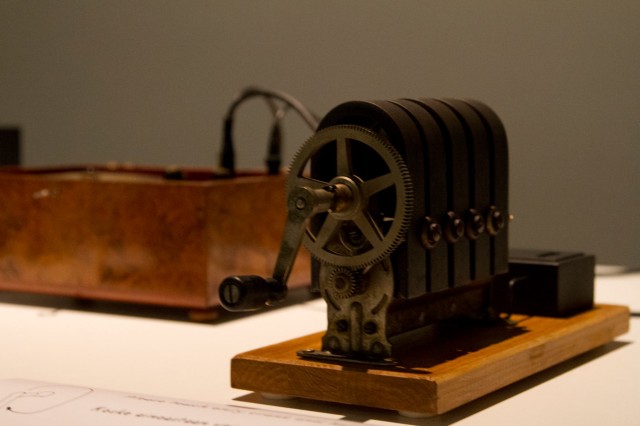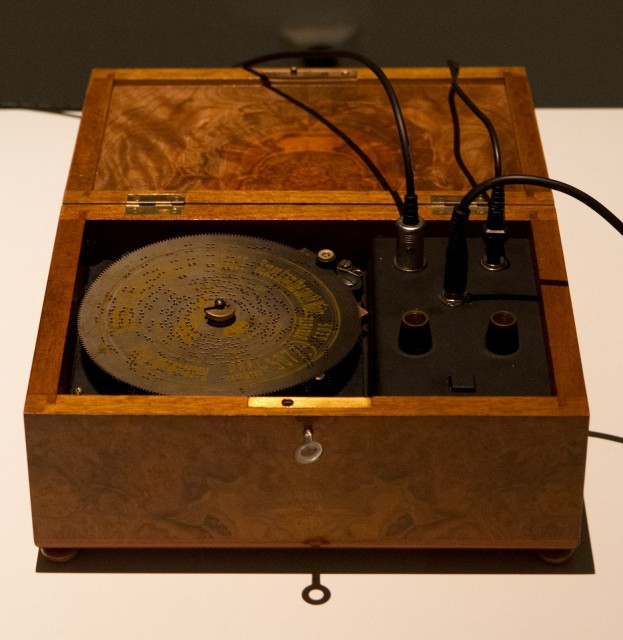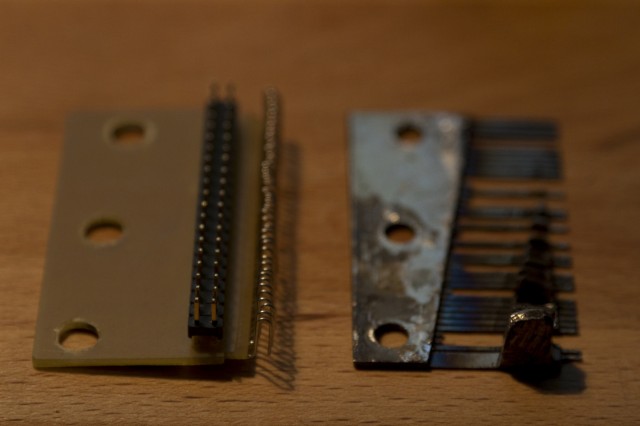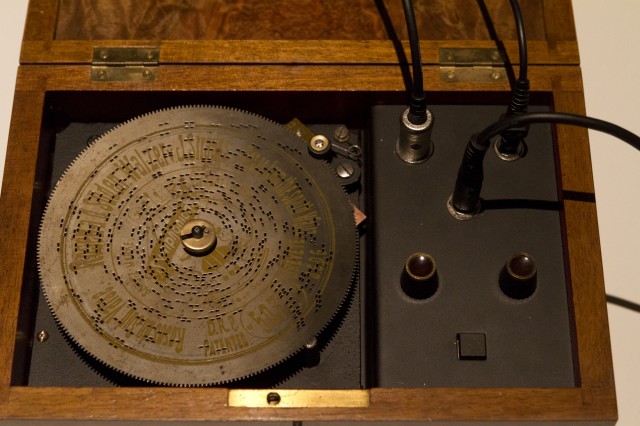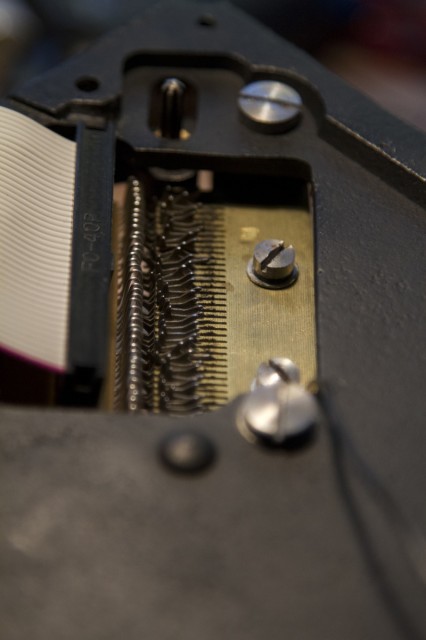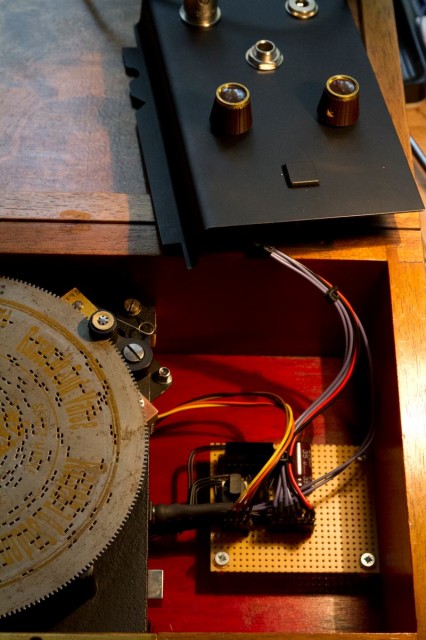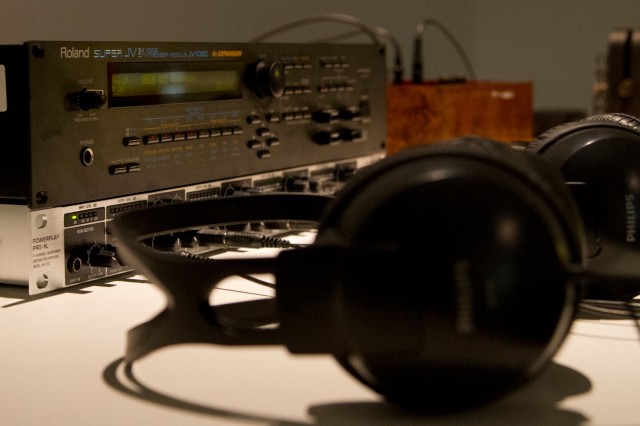Music, ephemeral and fleeting, to many of us wants tangible embodiment, some physical sense of the tug we feel from its unseen vibrations. We’ve regularly featured the image of the circle as a sequence; even as music software prefers left-to-right piano rolls and scores and tracks, it’s a logical shape. Here, Finnish sound artist Martin Bircher looks to a last-century invention to build a mechanical expression of the sequencer.
From an antique music box, comes MIDI, as in the video above. And if that’s too discordant for you, have a look at the original video below. Even in comparison to our analog electronics, there’s something beautiful about seeing the mechanical inner workings of a musical expression.
Official description:
“Digital Enhancement” is an interactive sound installation consisting of an electrified Symphonion Brevet No. 28, a synthesizer, an amplifier and four headphones. The Symphonion musical box dates back to the beginning of the last century and its mechanical workings are combined with digital technology to convert it into a MIDI sequencer. The original music, embossed on steel plates, can be played on the synthesizer, which is programmed to mimic the sounds of the Symphonion. In order to operate the sequencer, a hand-cranked dynamo serves as a remote control.
And the original Symphonion in action:
Martin tells CDM some more about the music box in question and how he converted it to a new, digital life:
The modified musical box Symphonion Brevet No. 28 was produced in the beginning of the last century. The used hand-cranked Style 28 was the simplest and therefore cheapest available model from a broad product range. It plays steel discs with 14.5 cm (5¾”) diameter.
To convert the musical box to a MIDI sequencer, parts of the Symphonion’s base plate were machined to clear space for the stepper motor, replacing the hand crank. A custom etched and with flexible wires extended contact plate replaced the metal comb, whose 40 teeth were originally plucked to generate the sound.
The conversion of the voltage from the contact plate into MIDI messages is done by a microprocessor. A second circuit is controlling the motors speed. The added control panel holds DC input socket, an input for the remote control or footswitch and the MIDI output. Further there are controls for play/pause, tempo, and gate-time. An antique wooden cassette serves as the new housing of the sequencer.
More information:
Project website: mar.li/digital_enhancement.php
Facebook: facebook.com/Bircher.Martin
In the meanwhile, we have the pleasure of getting to gaze at high-resolution images of the setup, courtesy the artist. (Click for the big versions…)
